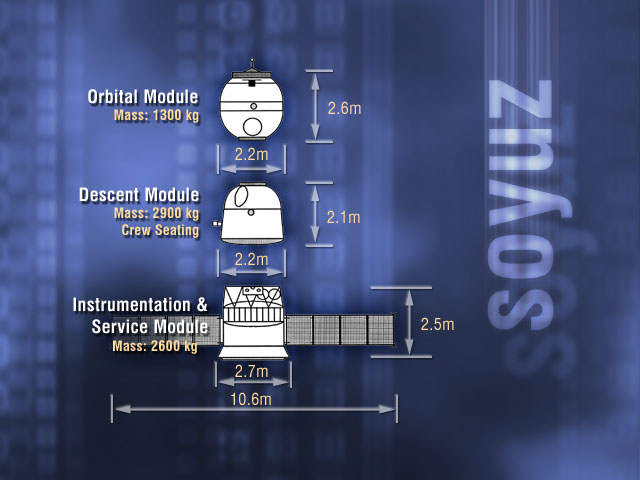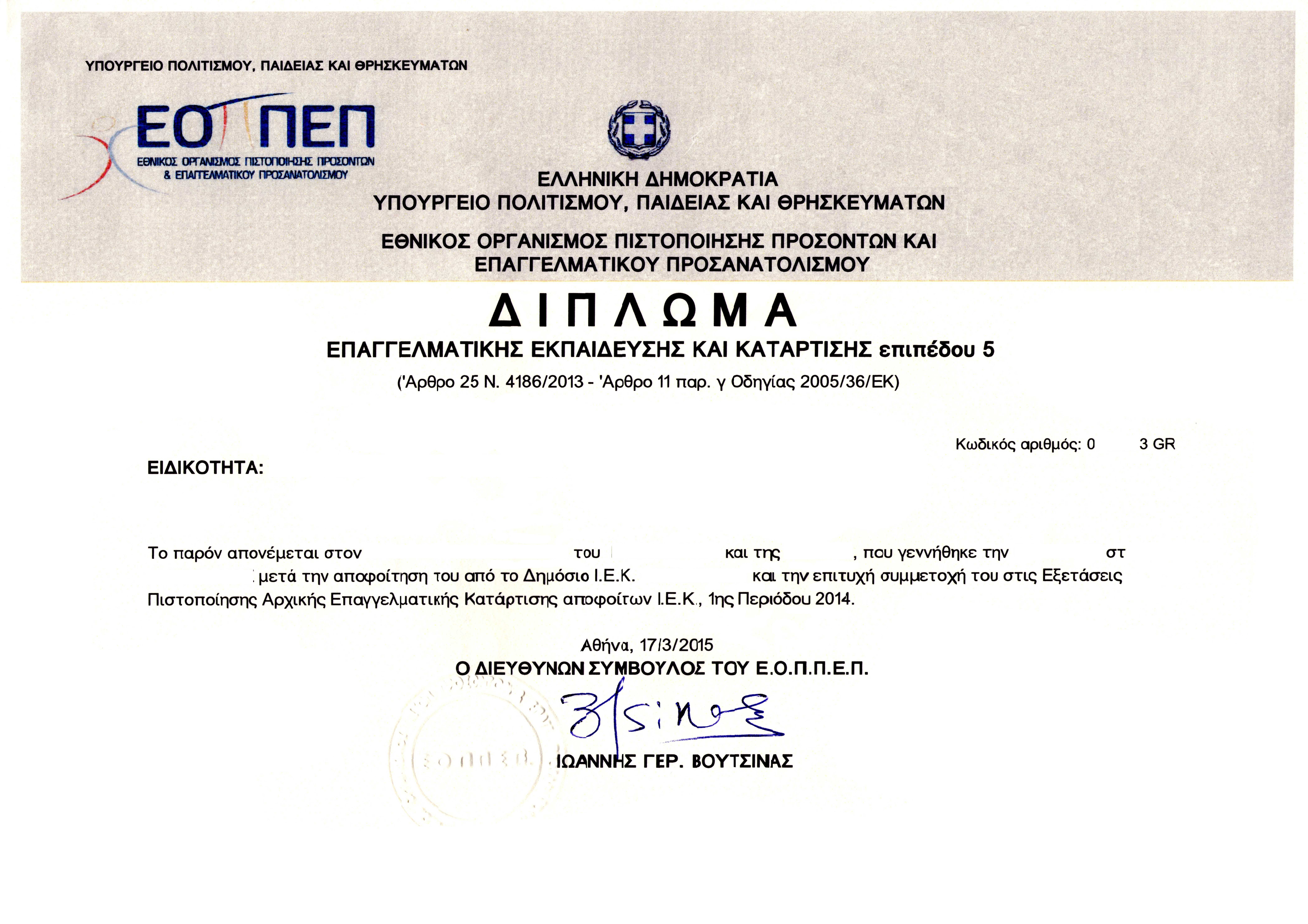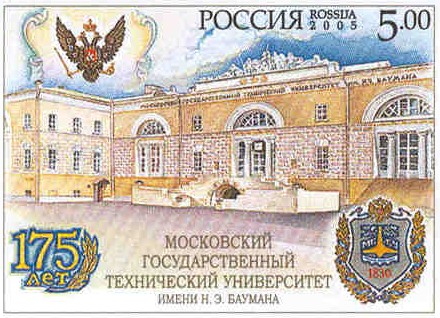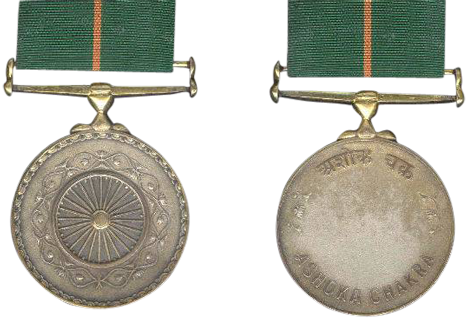|
Gennadi Strekalov
Gennady Mikhailovich Strekalov (russian: Генна́дий Миха́йлович Стрека́лов; 26 October 1940 – 25 December 2004) was an engineer, cosmonaut, and administrator at Russian aerospace firm RSC Energia. He flew into space five times and lived aboard the Salyut 6, Salyut 7, and Mir space stations, spending over 268 days in space. The catastrophic explosion of a Soyuz rocket in 1983 led to him being one of only four people to use a launch escape system. He was decorated twice as Hero of the Soviet Union and received the Ashoka Chakra from India. Personal life Strekalov was born on 26 October 1940 in Mytishchi near Moscow, the son of Mikhail Strekalov and his wife Praskoyva. Mikhail Strekalov was killed in 1945 while fighting for the Red Army in Poland. Gennadi Strekalov graduated from N. E. Bauman Moscow Higher Technical School in 1965 with an engineer's diploma. He married Lydia Anatolievna Telezhina; the couple had two daughters, Tatiana and Natalia. ... [...More Info...] [...Related Items...] OR: [Wikipedia] [Google] [Baidu] |
Roscosmos
The State Space Corporation "Roscosmos" (russian: Государственная корпорация по космической деятельности «Роскосмос»), commonly known simply as Roscosmos (russian: Роскосмос), is a state corporation of the Russian Federation responsible for space flights, cosmonautics programs, and aerospace research. Originating from the Soviet space program founded in the 1950s, Roscosmos emerged following the dissolution of the Soviet Union in 1991. It initially began as the Russian Space Agency, which was established on 25 February 1992russian: Российское космическое агентство, ''Rossiyskoye kosmicheskoye agentstvo'', or RKA (russian: РКА). and restructured in 1999 and 2004, as the Russian Aviation and Space Agencyrussian: Российское авиационно-космическое агентство, ''Rossiyskoye aviatsionno-kosmicheskoye agentstvo'', commonly known as (ru ... [...More Info...] [...Related Items...] OR: [Wikipedia] [Google] [Baidu] |
Salyut 6
Salyut 6 (russian: Салют-6; lit. Salute 6), DOS-5, was a Soviet orbital space station, the eighth station of the Salyut programme. It was launched on 29 September 1977 by a Proton rocket. Salyut 6 was the first space station to receive large numbers of crewed and uncrewed spacecraft for human habitation, crew transfer, international participation and resupply, establishing precedents for station life and operations which were enhanced on Mir and the International Space Station. Salyut 6 was the first "second generation" space station, representing a major breakthrough in capabilities and operational success. In addition to a new propulsion system and its primary scientific instrument—the BST-1M multispectral telescope—the station had two docking ports, allowing two craft to visit simultaneously. This feature made it possible for humans to remain aboard for several months. Six long-term resident crews were supported by ten short-term visiting crews who typically ... [...More Info...] [...Related Items...] OR: [Wikipedia] [Google] [Baidu] |
Soyuz Spacecraft
Soyuz () is a series of spacecraft which has been in service since the 1960s, having made more than 140 flights. It was designed for the Soviet space program by the Korolev Design Bureau (now Energia). The Soyuz succeeded the Voskhod spacecraft and was originally built as part of the Soviet crewed lunar programs. It is launched on a Soyuz rocket from the Baikonur Cosmodrome in Kazakhstan. Between the 2011 retirement of the Space Shuttle and the 2020 demo flight of SpaceX Crew Dragon, the Soyuz served as the only means to ferry crew to or from the International Space Station, for which it remains heavily used. Although China did launch crewed Shenzhou flights during this time, none of them docked with the ISS. History The first Soyuz flight was uncrewed and started on 28 November 1966. The first Soyuz mission with a crew, Soyuz 1, launched on 23 April 1967 but ended with a crash due to a parachute failure, killing cosmonaut Vladimir Komarov. The following flight was uncr ... [...More Info...] [...Related Items...] OR: [Wikipedia] [Google] [Baidu] |
Soyuz Program
The Soyuz programme ( , ; russian: link=no, Союз , meaning "Union") is a human spaceflight programme initiated by the Soviet Union in the early 1960s. The Soyuz spacecraft was originally part of a Moon landing project intended to put a Soviet cosmonaut on the Moon. It was the third Soviet human spaceflight programme after the Vostok (1961–1963) and Voskhod (1964–1965) programmes. The programme consists of the Soyuz capsule and the Soyuz rocket and is now the responsibility of the Russian Roscosmos. After the retirement of the Space Shuttle in 2011, Soyuz was the only way for humans to get to the International Space Station (ISS) until 30 May 2020, when Crew Dragon flew to the ISS for the first time with astronauts. Soyuz rocket The launch vehicles used in the Soyuz expendable launch system are manufactured at the Progress State Research and Production Rocket Space Center (TsSKB-Progress) in Samara, Russia. As well as being used in the Soyuz programme as ... [...More Info...] [...Related Items...] OR: [Wikipedia] [Google] [Baidu] |
Russian Academy Of Sciences
The Russian Academy of Sciences (RAS; russian: Росси́йская акаде́мия нау́к (РАН) ''Rossíyskaya akadémiya naúk'') consists of the national academy of Russia; a network of scientific research institutes from across the Russian Federation; and additional scientific and social units such as libraries, publishing units, and hospitals. Peter the Great established the Academy (then the St. Petersburg Academy of Sciences) in 1724 with guidance from Gottfried Leibniz. From its establishment, the Academy benefitted from a slate of foreign scholars as professors; the Academy then gained its first clear set of goals from the 1747 Charter. The Academy functioned as a university and research center throughout the mid-18th century until the university was dissolved, leaving research as the main pillar of the institution. The rest of the 18th century continuing on through the 19th century consisted of many published academic works from Academy scholars and a few Ac ... [...More Info...] [...Related Items...] OR: [Wikipedia] [Google] [Baidu] |
Sputnik 1
Sputnik 1 (; see § Etymology) was the first artificial Earth satellite. It was launched into an elliptical low Earth orbit by the Soviet Union on 4 October 1957 as part of the Soviet space program. It sent a radio signal back to Earth for three weeks before its three silver-zinc batteries ran out, and continued in orbit for three months until aerodynamic drag caused it to fall back into the atmosphere on 4 January 1958. It was a polished metal sphere in diameter with four external radio antennas to broadcast radio pulses. Its radio signal was easily detectable by amateur radio operators, and the 65° orbital inclination made its flight path cover virtually the entire inhabited Earth. The satellite's unanticipated success precipitated the American Sputnik crisis and triggered the Space Race, part of the Cold War. The launch was the beginning of a new era of political, military, technological and scientific developments. The word ''sputnik'' is Russian for ''satellite ... [...More Info...] [...Related Items...] OR: [Wikipedia] [Google] [Baidu] |
Sergei Korolev
Sergei Pavlovich Korolev (russian: Сергей Павлович Королёв, Sergey Pavlovich Korolyov, sʲɪrˈɡʲej ˈpavləvʲɪtɕ kərɐˈlʲɵf, Ru-Sergei Pavlovich Korolev.ogg; ukr, Сергій Павлович Корольов, Serhiy Pavlovych Korol'ov, sɛrˈɦij ˈpavlovɪtʃ koroˈlʲou̯) 14 January 1966) was a lead Soviet rocket engineer and spacecraft designer during the Space Race between the United States and the Soviet Union in the 1950s and 1960s. He is regarded by many as the father of practical astronautics. He was involved in the development of the R-7 Rocket, Sputnik 1, launching Laika, Sputnik 3, the first human-made object to make contact with another celestial body, Belka and Strelka, the first human being, Yuri Gagarin, into space, Voskhod 1, and the first person, Alexei Leonov, to conduct a spacewalk. Although Korolev trained as an aircraft designer, his greatest strengths proved to be in design integration, organization and strateg ... [...More Info...] [...Related Items...] OR: [Wikipedia] [Google] [Baidu] |
Diploma
A diploma is a document awarded by an educational institution (such as a college or university) testifying the recipient has graduated by successfully completing their courses of studies. Historically, it has also referred to a charter or official document of diplomacy. The diploma (as a document certifying a qualification) may also be called a testamur, Latin for "we testify" or "certify" (testari), so called from the word with which the certificate begins; this is commonly used in Australia to refer to the document certifying the award of a degree. Alternatively, this document can simply be referred to as a degree certificate or graduation certificate, or as a parchment. The certificate that a Nobel laureate receives is also called a diploma. The term diploma is also used in some historical contexts, to refer to documents signed by a King affirming a grant or tenure of specified land and its conditions (see Anglo-Saxon Charters and Diplomatics). Usage Australia In Aust ... [...More Info...] [...Related Items...] OR: [Wikipedia] [Google] [Baidu] |
Engineer
Engineers, as practitioners of engineering, are professionals who invent, design, analyze, build and test machines, complex systems, structures, gadgets and materials to fulfill functional objectives and requirements while considering the limitations imposed by practicality, regulation, safety and cost. "Science is knowledge based on our observed facts and tested truths arranged in an orderly system that can be validated and communicated to other people. Engineering is the creative application of scientific principles used to plan, build, direct, guide, manage, or work on systems to maintain and improve our daily lives." The word ''engineer'' (Latin ) is derived from the Latin words ("to contrive, devise") and ("cleverness"). The foundational qualifications of an engineer typically include a four-year Bachelor of Engineering, bachelor's degree in an engineering discipline, or in some jurisdictions, a Master of Engineering, master's degree in an engineering discipline plus ... [...More Info...] [...Related Items...] OR: [Wikipedia] [Google] [Baidu] |
Bauman Moscow State Technical University
The Bauman Moscow State Technical University, BMSTU (russian: link=no, Московский государственный технический университет им. Н. Э. Баумана (МГТУ им. Н. Э. Баумана)), sometimes colloquially referred to as the Bauman School or Baumanka (russian: link=no, Ба́уманка) is a public technical university (Polytechnic) located in Moscow, Russia. Bauman University a Russian technical university offering B.S., M.S. and PhD degrees in various engineering fields and applied sciences. History Bauman University is the second oldest educational institution in Russia after Lomonosov Moscow State University (1755). In 1763, the Russian empress Catherine II founded the Educational Imperial House. On October 5 1826 the Dowager Empress Maria Feodorovna issued a decree to establish "great workshops for different crafts with bedrooms, a dining room, etc." as a part of the Moscow Foundling Home in the German Quart ... [...More Info...] [...Related Items...] OR: [Wikipedia] [Google] [Baidu] |
Poland
Poland, officially the Republic of Poland, , is a country in Central Europe. Poland is divided into Voivodeships of Poland, sixteen voivodeships and is the fifth most populous member state of the European Union (EU), with over 38 million people, and the List of European countries by area, seventh largest EU country, covering a combined area of . It extends from the Baltic Sea in the north to the Sudetes and Carpathian Mountains in the south, bordering seven countries. The territory is characterised by a varied landscape, diverse ecosystems, and Temperate climate, temperate transitional climate. The capital and List of cities and towns in Poland, largest city is Warsaw; other major cities include Kraków, Wrocław, Łódź, Poznań, and Gdańsk. Prehistory and protohistory of Poland, Humans have been present on Polish soil since the Lower Paleolithic, with continuous settlement since the end of the Last Glacial Period over 12,000 years ago. Culturally diverse throughout ... [...More Info...] [...Related Items...] OR: [Wikipedia] [Google] [Baidu] |
Ashoka Chakra (military Decoration)
The Ashoka Chakra (alternative spelling: Ashok Chakra) is India's highest peacetime military decoration awarded for valor, courageous action, or self-sacrifice away from the battlefield. It is the peacetime equivalent of the Param Vir Chakra (PVC) and is awarded for the "most conspicuous bravery or some daring or pre-eminent valour or self-sacrifice" other than in the face of the enemy. The decoration may be awarded either to military or civilian personnel. Naik Narbahadur Thapa, Havildar Bachittar Singh and Flight Lieutenant Suhas Biswas were the first recipients of the Ashoka Chakra. Subsequent awards of the Ashoka Chakra are recognized by a bar to the medal ribbon. A recipient can be awarded the Kirti Chakra or Shaurya Chakra in addition to separate acts of gallantry. History The medal was originally established on 4 January 1952 as the "Ashoka Chakra, Class I" as the first step of a three-class sequence of non-combatant bravery decorations. In 1967, these decorations ... [...More Info...] [...Related Items...] OR: [Wikipedia] [Google] [Baidu] |





.jpg)



